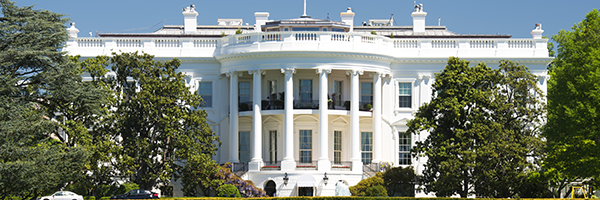
November 13, 2024 | Daily JAM, Morning Briefing |
Inflation ticked up slightly on an annual basis in October, the latest evidence that further reductions in inflation are getting hard to achieve. The Consumer Price Index climbed 2.6% from a year earlier, up from September’s 2.4% annual rate, the Bureau of Labor Statistics reported today. Core inflation, which strips out more volatile food and energy prices, held steady at 3.3% annual rate.

November 11, 2024 | Daily JAM, Morning Briefing |
With financial markets deeply conflicted about the effects of a Trump Administration’s policies on taxes, the deficit, mass deportations, and sky-high tariffs will have on the economy and interest rates the October Consumer Price Index (CPI) due Wednesday takes on added importance. Wall Street economists expect headline inflation rose 2.6% annually in October, an increase from the 2.4% rise in September. Core inflation, which strips out more volatile food and energy prices, is forecast to have climbed at a 3.3% rate year over year. That would be unchanged from September’s increase.

November 6, 2024 | COP, CVS, Daily JAM, LLY, Special Reports, UNG |
When I posted the previous version of this Special Report back on September 30, I wrote: “I don’t know which candidate will win the election. Right now the polls are within the margin of error on the national level–and even tighter in the seven battleground states that will likely decide the election. But I do know the results on November 5 will move stocks. Some right off the bat even before the results are certified. And more significantly as a new administration clarifies its policy views and takes office.” That has changed just a bit with last night’s victory by Donald Trump. We do know who won and will be the President come January 20. And we do know whose policies will move stocks and the financial markets in general. So let’s see if I can bring my picks and strategic advice up to date.

October 31, 2024 | Daily JAM, Morning Briefing, Short Term |
The Federal Reserve’s preferred measure of U.S. inflation, the Personal Consumption Expenditures (PCE) price index, fell to a 2.1% annual rate in September.

October 7, 2024 | Daily JAM, Morning Briefing |
It’s back! Fear that the economy is so strong that the Federal Reserve won’t cut interest rates as sharply or as quickly as expected. In the last few days, following on a surprisingly strong September jobs report, the market has gone from giving 50/50 odds to a second large 50 basis point interest rate cut at its November 7 meeting to pricing in doubts that the central bank will deliver even a 25 basis point cut.

September 30, 2024 | Daily JAM, Mid Term, Special Reports, Top 50 Stocks, TSLA, TSM |
I don’t know which candidate will win the election. Right now the polls are within the margin of error on the national level–and even tighter in the seven battleground states that will likely decide the electionm. But I do know the results on November 5 will move stocks. Some right off the bat even before the results are certified. Ans more significantly as a new administration clarifies its policy views and takes office.The results will move the stock market in general
And they will move individual stocks and sectors in particular.

September 11, 2024 | Daily JAM, Morning Briefing |
Definitely a mixed bag in the Consumer Price Index inflation report for August released today. I think the mixed results lower the odds of an aggressive 50 basis point interest rate cut at next week’s Federal Reserve meeting. But they keep the odds of a cut–most likely 25 basis points–at 100%.

August 30, 2024 | Daily JAM, Morning Briefing |
Today August 30 the Personal Consumption Expenditures index, the Federal Reserve’s preferred measure of inflation, showed core prices rose by just 0.2% in June. On a three-month annualized basis, core inflation, which doesn’t include volatile food and energy prices, climbed at a 1.7% rate, the Bureau of Economic Analysis reported. That’s the slowest rate of increase this year.

August 14, 2024 | Daily JAM, Mid Term, Morning Briefing |
Core CPI inflation rose at a 3.2% annual rate in July. That was the slowest rate of increase since early 2021.And that rate of increase was low enough to keep the Federal Reserve on track for cutting interest rates at its September 18 meeting.

August 11, 2024 | Daily JAM, Morning Briefing |
Expect a final inflation test before the Federal Reserve meets on September 18. Unless there’s a huge surprise in the Wednesday, August 14, CPI report, the Fed will cut interest rates for the first time at that meeting.

July 26, 2024 | Daily JAM, Morning Briefing |
The Personal Consumption Expenditures index, the Federal Reserve’s preferred measure of inflation, rose by just 0.% month-over-month in June, the Bureau of Economic Analysis reported this morning. The core personal consumption expenditures price index, which strips out volatile food and energy prices, increased 0.2% from May. The annual rate of core inflation was just 2.6%. Economists had projected a core annual rate of 2.5%. With the Fed set to meet on interest rates on July 31, inflation continues to move lower towards the central bank’s 2% target. These numbers support the Wall Street consensus calling for the Fed to begin cutting interest rates at its September 18 meeting.

July 12, 2024 | Daily JAM, Morning Briefing |
The all-items Consumer Price Index (CPI) declined 0.1% In June from May on a seasonally adjusted basis, the Bureau of Labor Statistics reported this morning. The month-to-month CPI inflation rate was unchanged in May.
Over the last 12 months, the all items index increased 3.0% before seasonal adjustment. Economists surveyed by Bloomberg had projected a 3.1% rate. The all-items index rose at a 3.3% annual rate in May. The core index rose at a 3.3% annual rate in June. That was the smallest 12-month increase in that index since April 2021.









